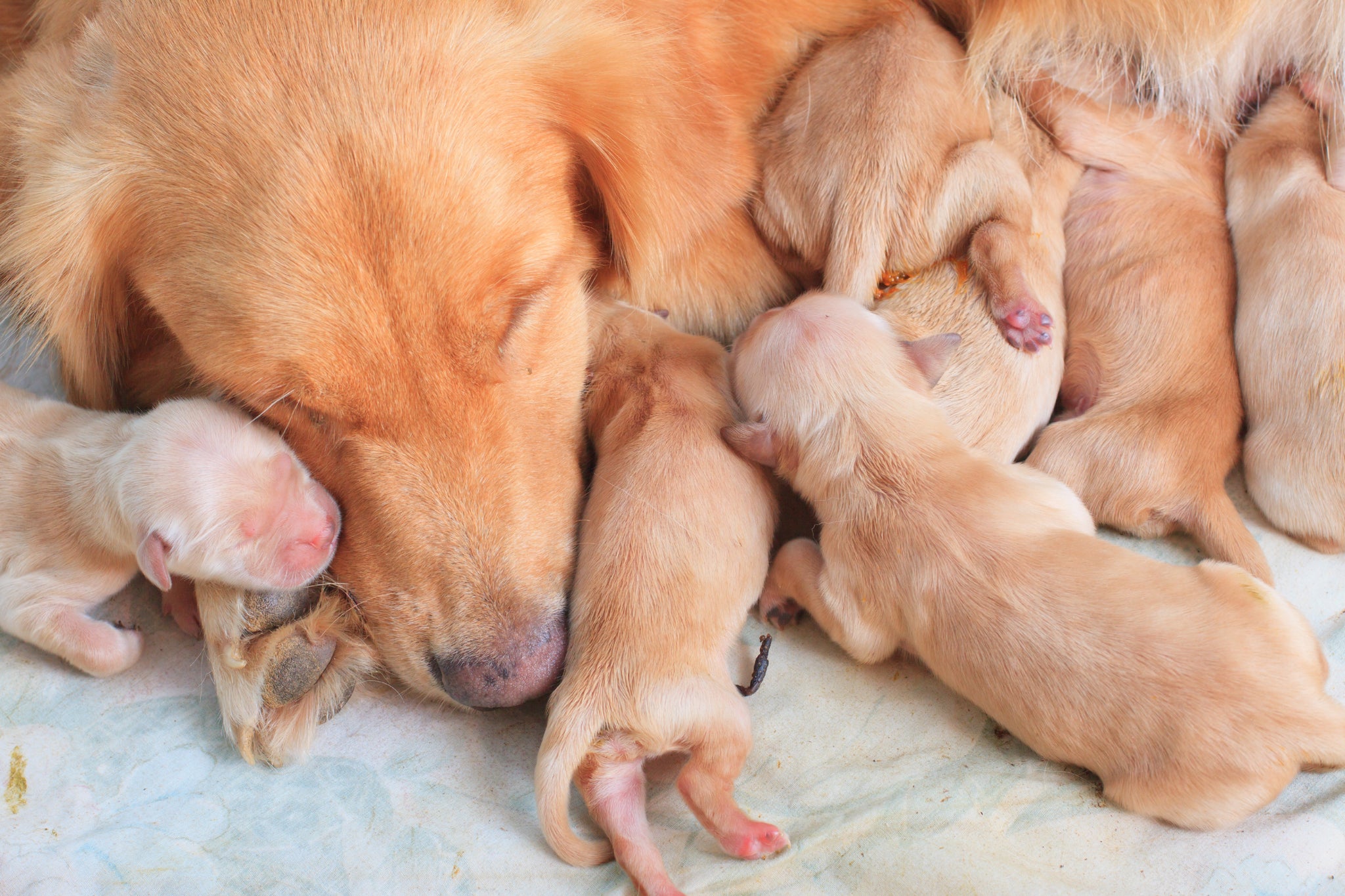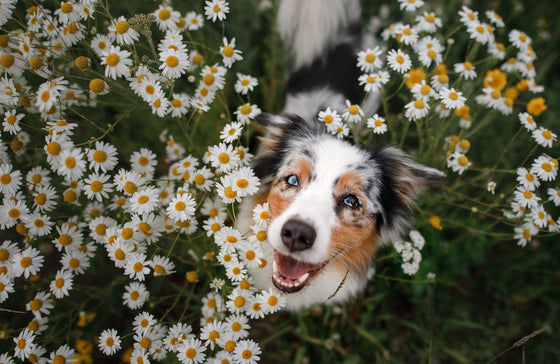
This is the first time your dog is pregnant and you are about to witness her giving birth to her very first litter of pups. It's exciting and at the same time, as a dog parent, it can be quite nerve-wrecking as you may wonder what you need to do to help your dog. The first step is to make sure to call your veterinarian beforehand on tips and what to do if there is an emergency. In addition, we've compiled a few tips & info on how you can assist your dog prior & during the birthing process and what may happen during the process.
A pregnant dog will normally show signs of birthing within 48 hours prior to labor. These signs include scratching at her bed, on your carpet, and/or looking for a safe place to have her puppies. You can help prepare a nesting box for her with enough newspapers and rags in it. If she appears to be looking for a good nesting spot, you can remind and direct her to the box you have prepared for her. Other signs include losing her appetite & restlessness.
You should take your dog's rectal temperature once or twice a day as her delivery date approaches. If her rectal temperature falls below 100°F, then this is a good sign that labor will begin soon (within 24 hours).
Prior to birthing, your dog will experience uterine contractions and may start pacing, digging, panting, vomiting. These are considered normal behaviors and may occur within 12 hours prior to the delivery.
The fact is, dogs normally don't need much help from humans and that the best thing is to let nature take it's course. So, when your dog first goes into labor, simply keep a good distance away while quietly observing her. Although it may be your dog's first time giving birth, you will be astonished to see how your dog's natural instincts take over as they give birth & nurse their pups. Here are a few things to note as you witness your dog give birth for the first time so that you aren't too alarmed.
Once your dog is ready to deliver her first pup, you will notice her straining or pushing for a good 10-30 minutes before the pup comes out. You may notice a bag coming out - this is the water bag and may rupture before the puppy is born. Normally after this happens, a straw colored fluid is secreted. Once the water bag breaks, the puppy will come out.
Each puppy may be born about 30-60 minutes apart. You may notice that each newborn pup is covered with a membrane that the mother dog will instinctively bite away. She will also lick the membrane off her pups face and nose to enable the puppy to breathe. The mother will bite off the umbilical cord that's attached to the puppy within a few minutes to birthing and then proceed to lick her pup clean.
If you notice that the mother does not remove the membrane within a few minutes you will need to assist by gently removing the membrane with your fingers and using a clean towel to rub the puppy clean. Tie a string/cord around the umbilical cord about an inch above the pup's abdomen. Do not pull on the umbilical cord. The cord should fall off on its own after a few days.
You may notice that after each pup is born, your dog will expel the placenta. Some dogs will instinctively eat the placenta from the pup to remove signs of birth & prevent attracting predators. However, you may want to prevent your dog from eating too much of it as it could cause vomiting later. Your dog may take a break halfway through the delivery process and begin again. Some dogs may be born tail first which is not abnormal unless the pup seems stuck.
It would be wise to notify your veterinarian prior to the delivery so that they would be available should there be an emergency. If you notice any of these signs, call your veterinarian right away:
- If your dog does not go into labor within 24 hours of her temperature dropping below 100°F
- Straining or having contractions for more than 45 minutes when no puppy has been born
- Puppy appears to be stuck or halfway out and the mother is unable to push the pup out
- If it has be more than four hours since the last pup is born and you know there are more inside
- Your dog appears to be in extreme pain
If at any point, you are in doubt or are concerned that your dog or her puppies need additional assistance, contact your veterinarian. This is the best way you can assist your dog should there be any complications.
However, fortunately in most cases, the birthing process is usually hands off, nature takes its course, and your dog and puppies will be fine. So relax, breath, and welcome the new furry additions to the family.


Spring is finally here, and as a dog owner, it's important to make sure your furry friend is ready for the season. With a little bit of effort, you can help your furry friend transition smoothly into the spring season.
Here are seven dog care tips to keep in mind:
